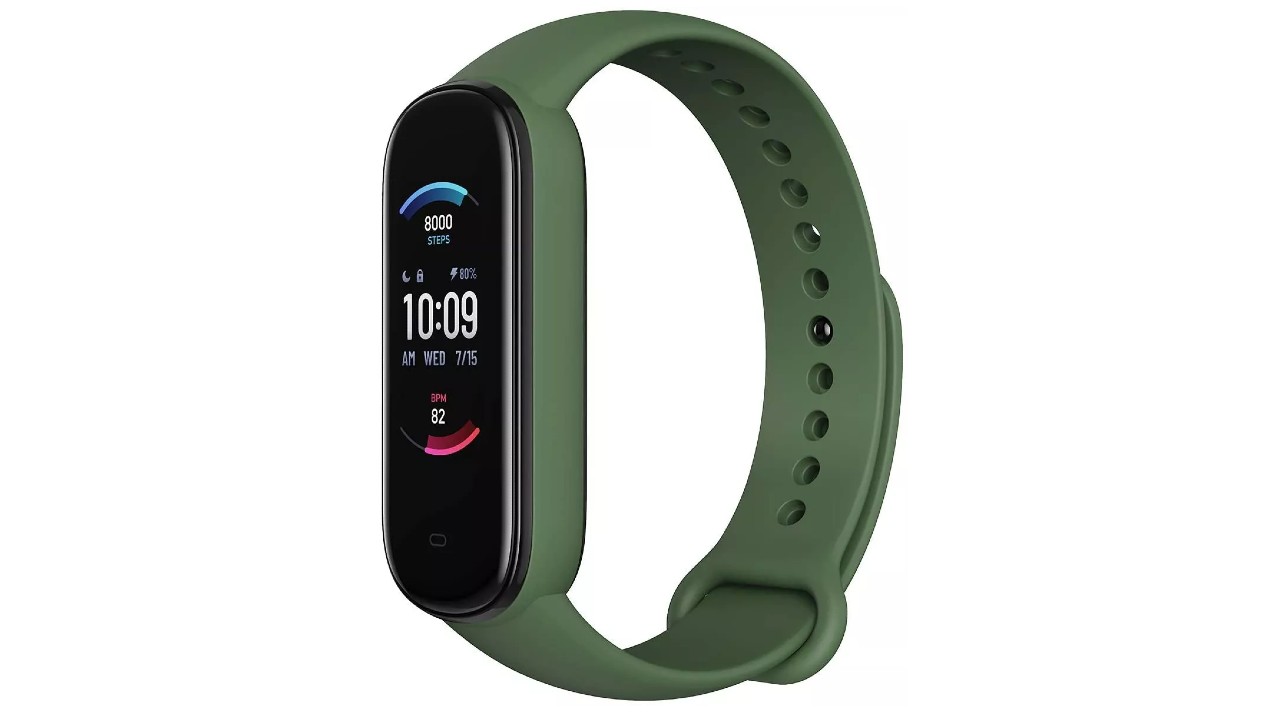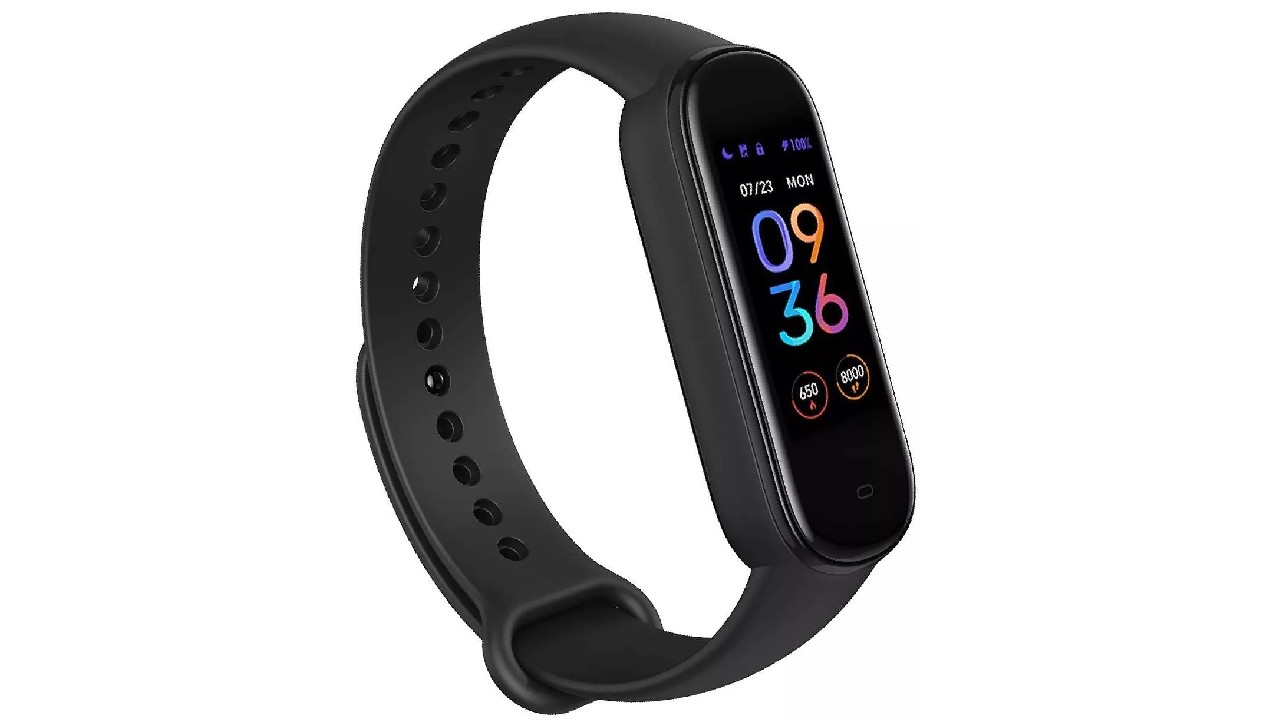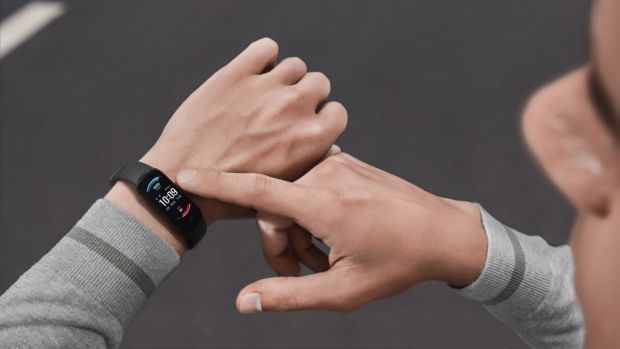Our Verdict
A good-value fitness band with some neat extras, including Alexa integration, but no on-board GPS.
For
- Stylish design
- Great screen
- Long battery life
- Comfortable to wear 24/7
Against
- Fiddly interface
- No built-in GPS
- Alexa feels gimmicky
You can trust Coach
The huge array of under-£50 fitness bands can be intimidating to new buyers, and identifying the best cheap fitness bands is not an easy task. What was once the bread and butter of Fitbit is now filled with brands – mostly Chinese – offering feature sets that are almost interchangeable. Bands from Huawei, Honor (a Huawei sub-brand) and Xiaomi are all on at least their fourth iteration, and Amazfit is keeping pace with its fifth device in this product line.

Amazfit Band 5: Price And Availability
The Amazfit Band 5 is available from Amazon and other retailers with an RRP of $39.99/£39, but it's often available for less, especially now that the newer Amazfit Band 7 has been released.

Smart Features On The Amazfit Band 5
The big development this time around is Alexa integration, which was added halfway through my time with the tracker via an over-the-air update. I’m not convinced it was worth the wait. You activate it by swiping left on the band, wait for it to connect to your phone and then ask a question. The answer then appears on your screen, in much the same way as on the Fitbit Versa 2 and 3. It’s a neat party trick, but unlikely to be something you lean on as anything more than a novelty. The screen’s small text and the general fiddliness of opening Alexa in the first place make it more trouble than it’s worth.
Otherwise, there’s not a huge number of smart features on the Amazfit Band 5, but what is there is good enough. It’s a fitness band, and trying to emulate the full smartwatch experience isn’t sensible given the tiny screen.
There are notifications and you can easily select which apps push messages to the device. I decided to just stick with Gmail, WhatsApp and SMS, and the alerts are clear enough to read although any attached pictures come up as an icon. On top of notifications, there’s also the weather and event reminders, which can be added via the accompanying app, or via voice with Alexa.

Health Features On The Amazfit Band 5
Like the Zepp E smartwatch (both use the same Zepp app, thanks to Amazfit’s acquisition of the company), an overall indicator of your activity level is provided by a Personal Activity Indicator (PAI) figure. It’s based on your heart rate and the amount of intense physical exercise you do, but the long and short of it is that if you keep the score above 100, you’ll be less likely to die of cardiovascular disease – according to a HUNT Fitness study from the Norwegian University of Science and Technology’s medical school.
Fuller details of the methodology can be read on your wrist by tapping the little question mark below your PAI score, but it would be a brave person to try to take it all in there, seeing as it took me 11 swipes to scroll through it all.
Sign up for workout ideas, training advice, reviews of the latest gear and more.
I found the simplicity of this quite welcome on the Zepp E, but here I’m less sure. I think the difference is that while PAI was one of the home screens on the smartwatch, here you have to cycle down a list of icons to find it, and then tap in to see its verdict. As such, it’s pretty easy to ignore and forget, which is unfortunate for something which is trying its hardest to make you live longer.
There’s also the option to measure your heart rate, SPO2 and stress, and – if the latter is too high – the ability to do guided breathing exercises to calm down. SPO2 is an increasingly common feature and a topical one, since a dramatic drop is cited as a mark of deterioration if you have COVID-19. It shouldn’t be treated as medically reliable though (Amazfit makes no such claim) but as a push to see a doctor. In general it’s not that useful a metric – the kind of thing that’ll be used once or twice and then forgotten about.
Tracking Activity With The Amazfit Band 5
Step counting is front and centre on the default watch screen. Just above the time, with a small footstep icon, is a running total of the steps you take in a day along with a ring that slowly fills up as you approach whatever your target is. It’s simple but effective.
The workout section presents 11 eclectic options to track: outdoor running, treadmill, cycling, indoor cycling, elliptical, yoga, jump rope, walking, rowing machine, pool swimming and the catch-all freestyle.

For anything indoors, this tends to be on the basic side: time, estimated calorie burn and heart rate – though it’s good that swimming estimates distance, and jump rope will use the accelerometer to have a stab at how many times you’ve jumped.
Like most wearables, then, the Amazfit Band 5 hasn’t quite figured out how to be a helpful gym buddy, but the options on offer are at least on a par with others at this price point.
Running With The Amazfit Band 5
Running, hypothetically, should be better because GPS provides location data so the watch can calculate how fast you’re moving. However, the Band 5 piggybacks off your smartphone’s GPS, which can make for a less accurate experience than devices with built-in GPS.
Fortunately that wasn’t a problem in my experience with the Amazfit Band 5 – though your mileage may vary in every sense of the phrase. If you have a phone with overeager battery-saving tech, for example, you may find it’s reluctant to hand over accurate GPS data every time the band asks for an update.
Across three runs with the Amazfit Band 5 on my right wrist and a Garmin Forerunner 245 on the other, the differences were forgivable, especially on the two shorter sub-4km jaunts, where the difference was under 0.07km each time.
The difference was greater in a longer run, measured by Garmin at 5.64km, but clocked in by the Amazfit Band 5 as 5.43km. Even then it’s not too bad for the casual fitness types the £50 band is suited to. Heart rate was also similar between the two, with Garmin registering a high of 169bpm and an average of 143bpm over said distance, with Amazfit measuring a peak of 172bpm and an average of 141bpm.
The actual running experience is fine, if basic and nowhere near as good as a dedicated running watch, chiefly because of its form factor. The 1.1in screen shows five metrics – time, distance, pace, calories burned and heart rate – but as you might imagine, they don’t all fit on one screen, requiring you to scroll through in the absence of buttons. On top of this, the small display is tricky to read when you’re moving.
I also found stopping a run tricky. In theory, you just need to hold down your finger on the capacitive (touch-sensitive) button until the three-second countdown reaches zero. Rain and sweat seemed to disrupt this – which perhaps isn’t surprising when the watch also managed to record an erroneous 27-second swim when I was in a post-run shower.
Sleep Tracking With The Amazfit Band 5
Where the Amazfit Band 5 fares better is sleep tracking. It’s comfortable enough to wear at night and provides a summary of your night’s shut-eye, divided into deep, light, REM and awake time. One night’s data is interesting enough, but there are tabs in the app so you can view weekly, monthly and annual trends.
Zepp adds in context, too, comparing you with others. For example, I have a tendency to fall asleep faster than 67% of people, but I also know that my time spent in a state of deep sleep is on the low side.
The app offers advice on how to improve things, but frankly it’s nothing you wouldn’t find via a simple Google search for “better sleep”: things like reducing caffeine intake, doing more exercise and avoiding stimulation before bed. Still, since the app lets you pick your chosen pre-sleep activity (playing games, having a bath, reading a book etc), you can at least keep tabs on what seems to translate to better sleep and act to improve things. But given this involves dipping into the app daily, you have to be pretty invested in your sleep metrics to keep annotating.
Battery Life On The Amazfit Band 5
Like most Amazfit products, this is where the Band 5 really shines. The company quotes 15 days of use from the fitness tracker’s 125mAh battery, though this will be shortened if you use it for running, getting notifications or measuring your heart rate. Using these essential features, I got comfortably over a week. The only minor issue is the bespoke magnetic charger it ships with: it’s pretty easy to misplace, and good luck finding anyone else with a backup in a pinch.
The Amazfit Band 5’s Design

As with most fitness bands, the Amazfit Band 5 is remarkably discreet. Our unit arrived with a black band (though it’s also available in a military green), and the screen doesn’t have an always-on mode, meaning it only draws attention to itself when you sharply move your wrist or tap the button.
The rubber strap it comes with makes it perfectly breathable for the gym or on runs, and its 5 ATM water resistance means it’s also good for wearing in the shower. The tracker can be removed should you find a third-party band you like.
While the 1.1in AMOLED screen seems to cover the whole of the device, there’s actually a sizable bezel at the top and bottom disguised by every menu having a black background. Still, it’s sharp enough with a 126x294 resolution, and it’s wonderfully bright and colourful.
Controlling it is a little fiddly. There are no physical buttons; instead you bring the wearable to life by tapping the capacitive button below the screen, and then navigate with swipes and taps. It’s OK, but it gets a bit fiddly when you’re trying to access something in a hurry – say, if somebody has just shouted “go” on the start line of a race.
Should You Buy Something Else?
Honestly, there’s very little difference between the various £50-and-under fitness bands available. Whether you opt for this, the Xiaomi Mi Band 5 or the Honor Band 5 will come down to which looks better to you and the current state of pricing, which fluctuates.
That said, the Amazfit Band 5 doesn’t really do anything wrong, and the Alexa functionality – limited as it is – may prove appealing to some people. If accurate tracking of running and cycling is important to you, I’d urge you to seek out a device with GPS built in – the Huawei Band 4 Pro, for example, or something from our pick of the best running watches. For anyone who just wants a casual fitness tracker, the Amazfit Band 5 ticks all the right boxes.
Alan is a freelance tech journalist and mostly covers fitness trackers for Coach.
Alan was not what you would call a big fitness guy growing up, but has been radicalised by parkrun and taken up running in a big way. Although nowhere near podium at races, as a late starter he does at least know that he can still get faster. Alan has written for ShortList, Tom’s Guide, Trusted Reviews and Expert Reviews, among others.


